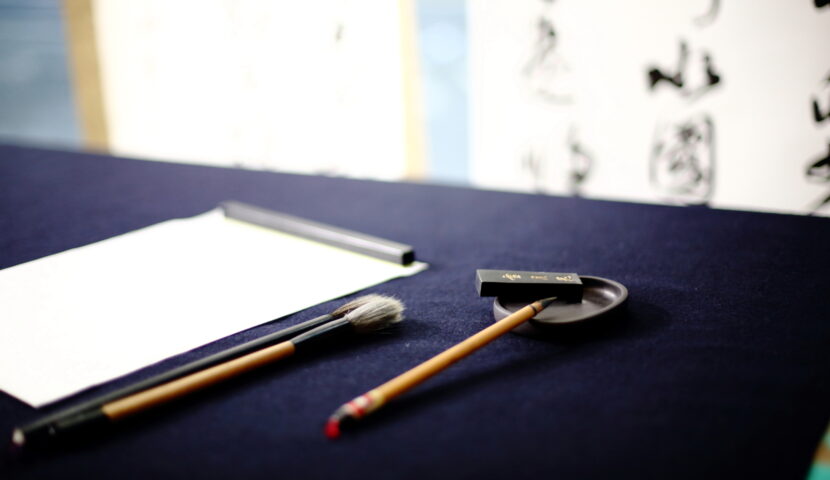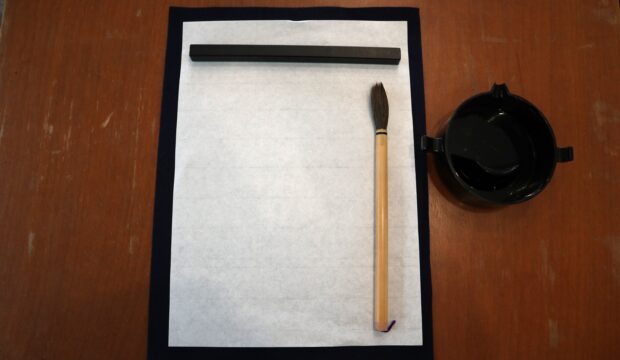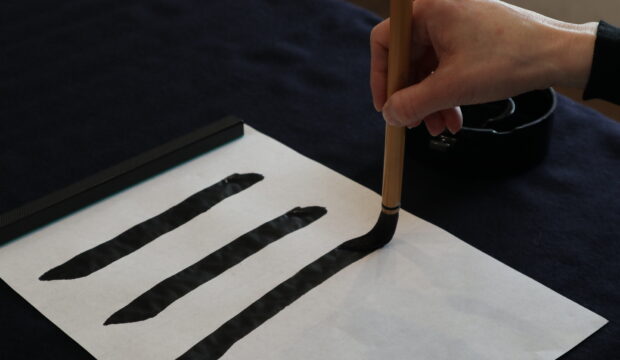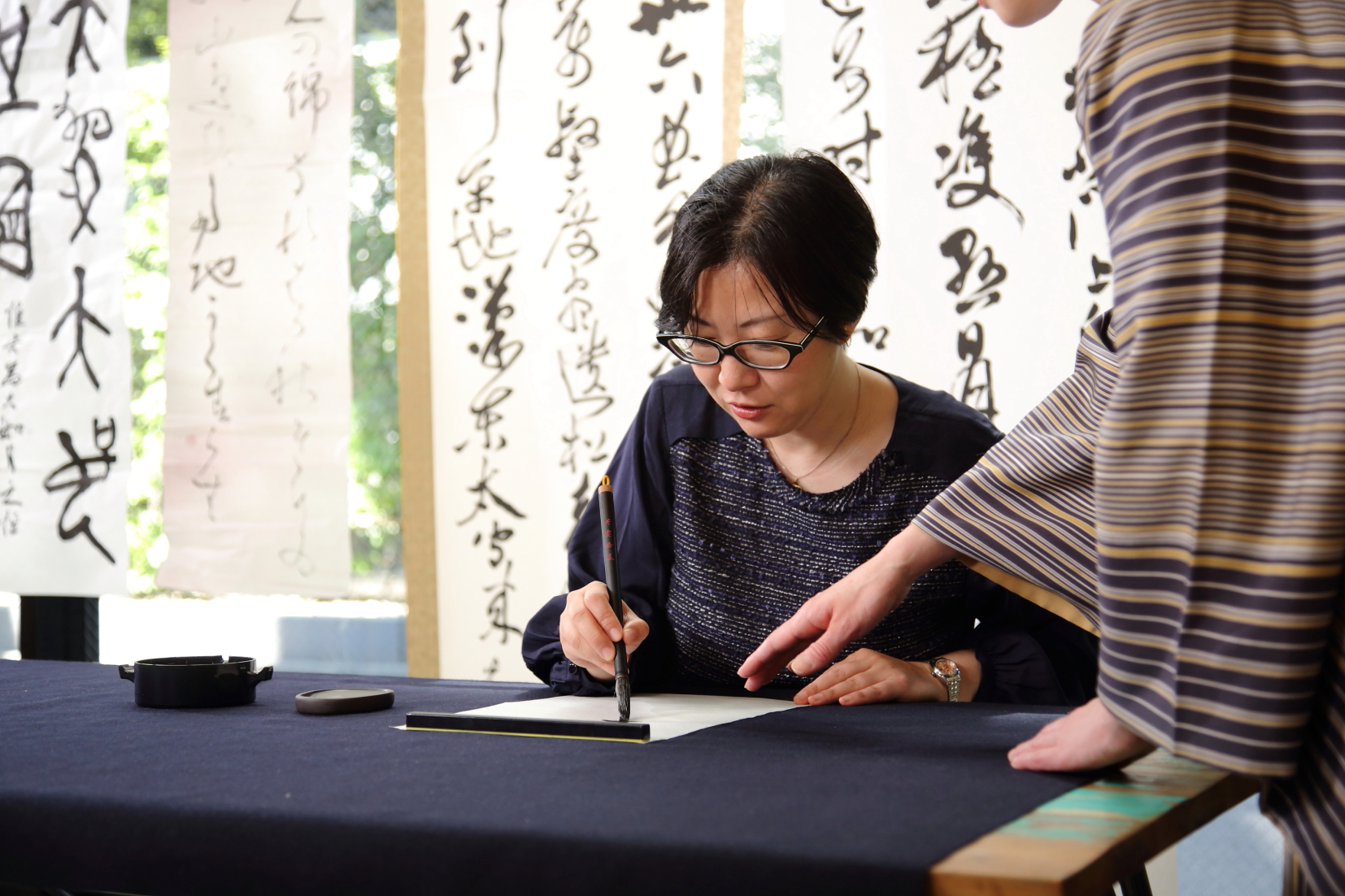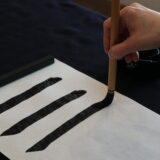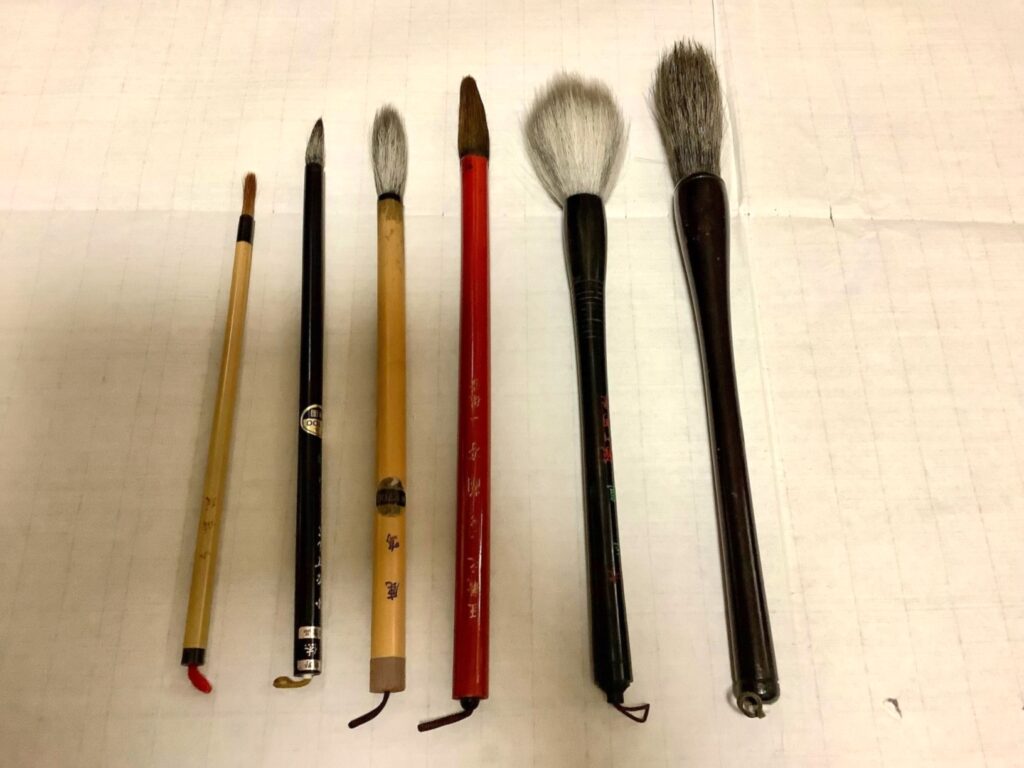
Fude (Brush)
The brush tip bristles are made from animal hair, usually sheep, horse, or weasel. The firmness of the hair varies depending on the animal. Sheep hair is soft, while weasel hair tends to be stiffer. There are also brushes made of synthetic fibers—these are often best for beginners. Brushes don’t last forever. If you practice calligraphy once a week with the same brush, you would need to replace it after about six months.
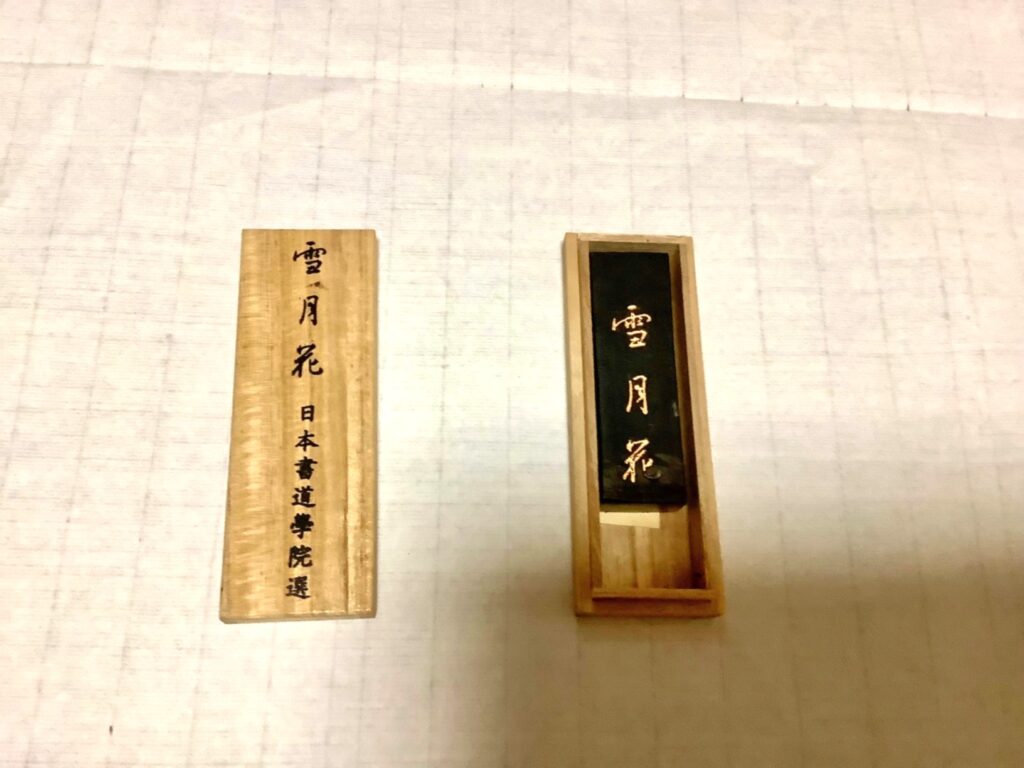
Sumi (Ink)
Traditionally, sumi comes in a solid block form. You turn it into ink by moistening the end with water and grinding it on an inkstone. Nowadays, you can buy bottled liquid sumi.
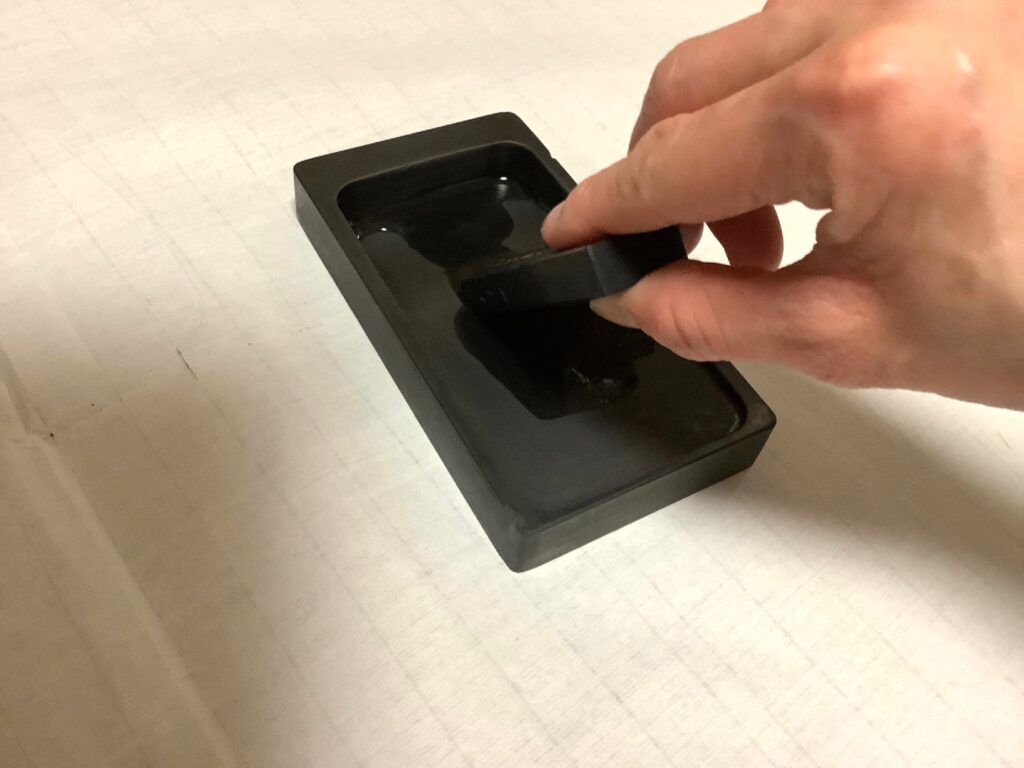
Suzuri (Inkstone)
Suzuri are made of stone. They have a shallow lip around the edge to prevent spillage and a flat area that dips into a deeper section at one end. To create ink, you draw up a few drops of water from the deeper section and grind the sumi block on the flat area.

The ground ink collects in the deeper section. Once it’s dark enough, you dip your brush into this collected ink for use.
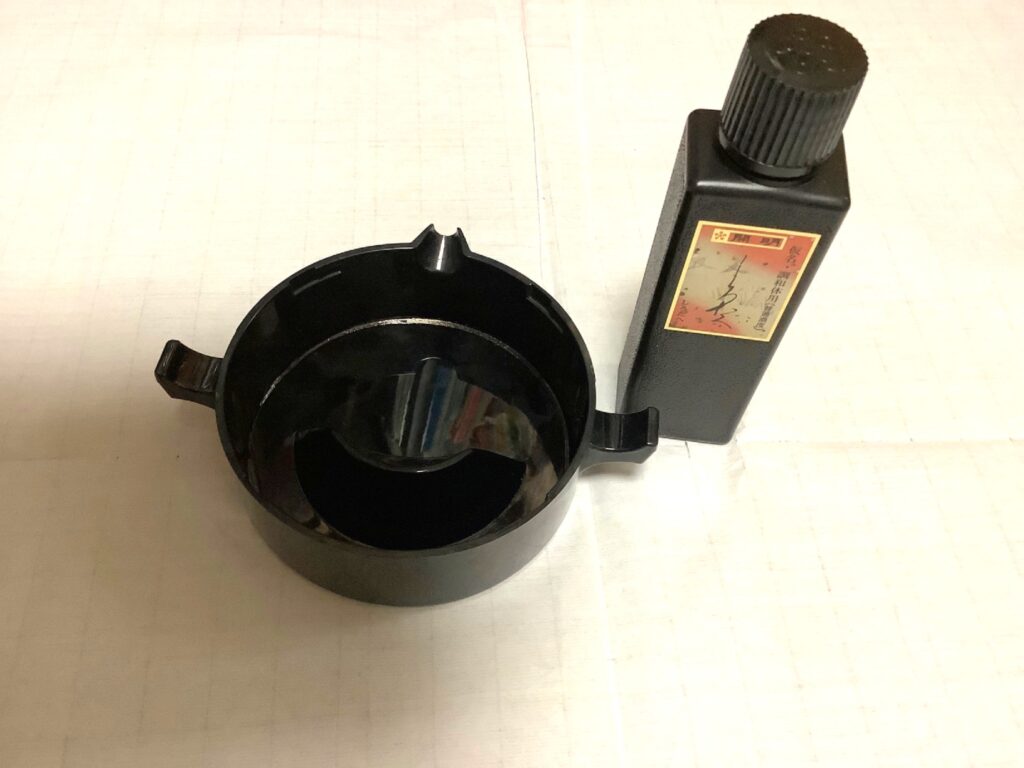
Since suzuri are heavy to carry and may break if dropped, round plastic containers are often preferred nowadays, especially if you use liquid ink, which doesn’t need grinding.
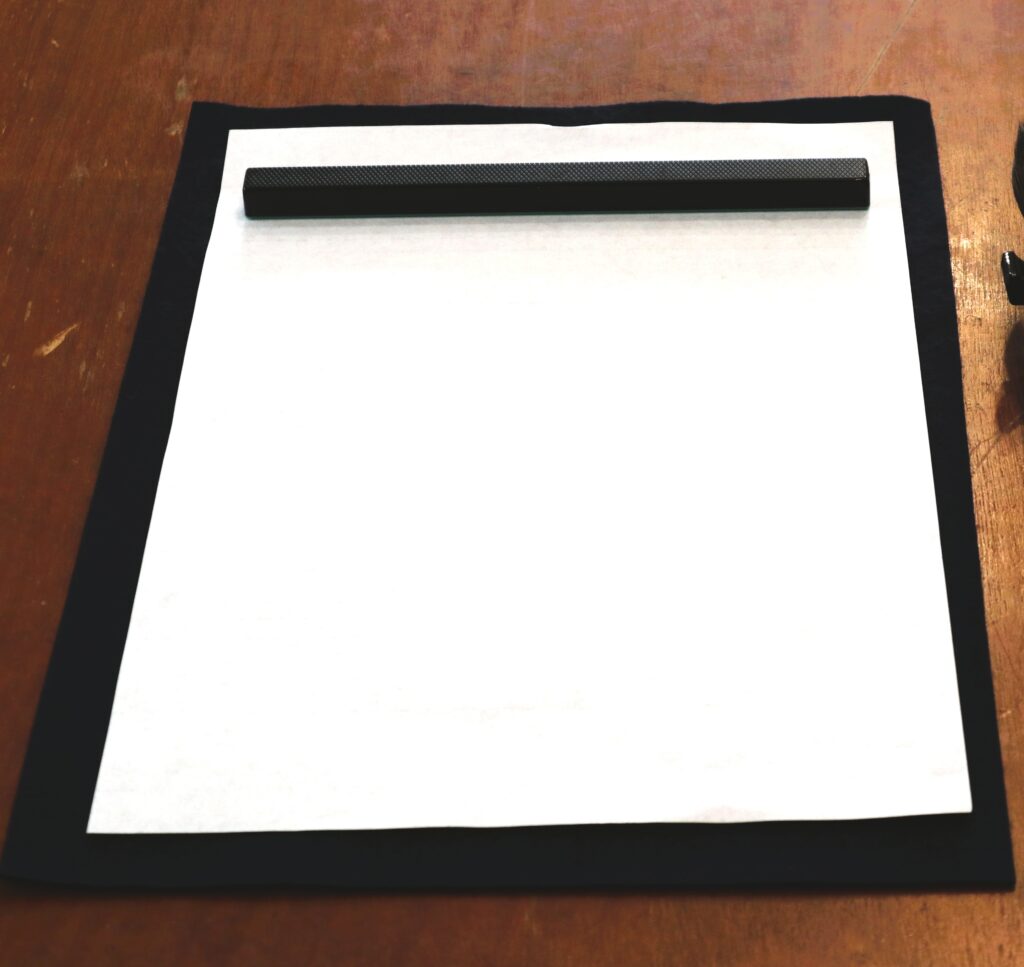
Shitajiki (Underlay)
The shitajiki is made of felt and designed to prevent ink from bleeding through the paper and onto your table or desk. Your paper goes on top of the shitajiki, which come in various sizes. Small ones are enough for a postcard size, while large ones can be over 2 meters long. Longer underlays can be rolled up for carrying.

Bunchin (Paperweight)
Bunchin are placed along the top edge of your paper to prevent it from shifting while writing. They are often made of iron or cast metal. However, since these can be heavy to carry around, there are also lighter versions made of plastic. When securing large pieces of paper, heavier paperweights provide more stability, but lighter weights work fine for smaller paper.
Where can you purchase calligraphy supplies?
You can buy them at large stationery stores all over Japan. Many smaller shops or even 100-yen shops may also carry them, though they might not have complete sets. It’s also worth noting that there are many expensive brushes or sumi blocks available. These can be tempting, but it’s best for beginners to start with items around 1,000 yen.
We provide all the tools and materials for our workshop—no need to bring anything! Just be sure to wear clothes that you don’t mind getting dirty, since ink can spatter and doesn’t wash out.
